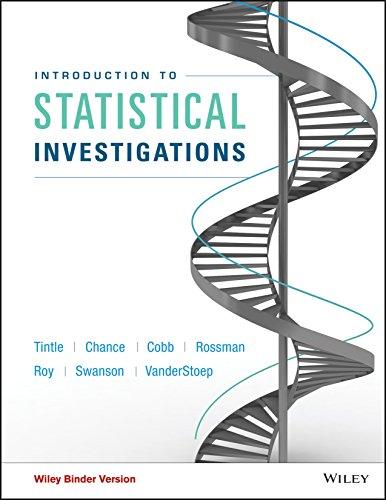Refer to the data in the previous question where Zwerg successfully chose the object with the marker
Question:
Refer to the data in the previous question where Zwerg successfully chose the object with the marker 26 out of 48 times. In order to discern whether Zwerg is doing better than just guessing (50% correct) we will employ the 3S strategy:
a. Statistic: How many times did Zwerg pick the correct object? Out of how many attempts?
b. Simulate: Using an applet, simulate 1,000 repetitions of having Zwerg choose between the two objects if she is doing so randomly. Where is the distribution centered?
c. Based on the value of the statistic from part (a), do you think the chance model is wrong? Why or why not?
d. Strength of evidence: Based on your answers for (a)–(c), state your conclusions about the research question of whether the data provide convincing evidence that Zwerg can correctly follow this type of direction by an experimenter more than 50% of the time?
e. Are the results of this study statistically significant or is the chance model plausible? How are you deciding?
f. Compare Zwerg’s performance in this study to that mentioned in Exercise 1.1.15. Do the results of this study provide more, less, or equally convincing evidence that Zwerg can correctly follow this type of direction by an experimenter more than 50% of the time, compared to the study results in Exercise 1.1.15? Could you have anticipated this? Explain.
g. Does this prove that Zwerg is just guessing when the marker is used to indicate the correct object? Why or why not?
The word "distribution" has several meanings in the financial world, most of them pertaining to the payment of assets from a fund, account, or individual security to an investor or beneficiary. Retirement account distributions are among the most...
Step by Step Answer:

Introduction To Statistical Investigations
ISBN: 9781118172148
1st Edition
Authors: Beth L.Chance, George W.Cobb, Allan J.Rossman Nathan Tintle, Todd Swanson Soma Roy





